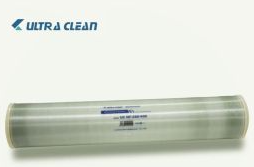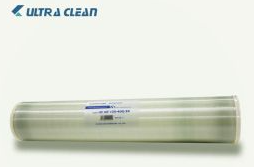Nanofiltration (NF) membranes are a type of filtration technology that is used to separate contaminants from water or other liquids. They are similar to reverse osmosis (RO) membranes, but they have a smaller pore size and are not able to filter out as small of particles. NF membranes are used in a variety of applications, including water treatment, food and beverage processing, and industrial wastewater treatment.

There are many different types of NF membranes available on the market, and each type has its own unique characteristics and features. One such type is the NF280 nanofiltration membrane, which is a spiral-wound, thin-film composite (TFC) membrane that is designed for use in low pressure nanofiltration systems. It is made from a blend of cellulose acetate and polysulfone, and has a pore size of around 0.2 microns.

The 150 series is another type of nanofiltration membrane, which is a ceramic nanofiltration membrane that is made from a porous ceramic material. It has a pore size of around 0.1 microns, which is slightly smaller than the pore size of the NF280. The 150 series is designed for use in high pressure nanofiltration systems, and is known for its high temperature stability and chemical resistance.
One key difference between the NF280 and the 150 series is the material they are made from. The NF280 is a thin-film composite membrane made from cellulose acetate and polysulfone, while the 150 series is a ceramic membrane made from a porous ceramic material. This difference in material can affect the performance and durability of the membranes in different ways.
For example, the cellulose acetate and polysulfone material used in the NF280 is known for its high tensile strength and resistance to chlorine, but it can be prone to fouling and may not be as resistant to certain chemicals as the ceramic material used in the 150 series. On the other hand, the ceramic material used in the 150 series is known for its high temperature stability and chemical resistance, but it may be more prone to cracking and breaking than the cellulose acetate and polysulfone material used in the NF280.
Another difference between the two membranes is the pore size. The NF280 has a pore size of around 0.2 microns, while the 150 series has a pore size of around 0.1 microns. This means that the 150 series is able to filter out smaller particles than the NF280, which can be beneficial in certain applications. However, it also means that the 150 series may have a higher pressure drop and require more energy to operate than the NF280.
In terms of performance, the NF280 is known for its high rejection of contaminants and its ability to produce high quality permeate. It is commonly used in applications where the removal of dissolved solids and the production of high purity water are important. The 150 series is also known for its high rejection of contaminants, but it is typically used in applications where the removal of smaller particles and the production of very high purity water are required.
Overall, the NF280 and the 150 series are both high-quality nanofiltration membranes that can be used in a variety of applications. The main differences between the two membranes are the material they are made from, their pore size, and the type of system they are designed for. The choice between the two will depend on the specific requirements of the application and the specific needs of the user.
If you want to know more information about nanofiltration (NF) membranes, please contact us. We will provide professional answers.